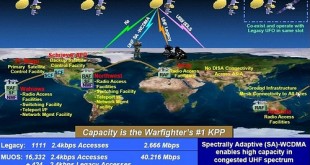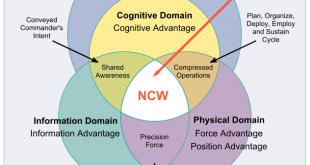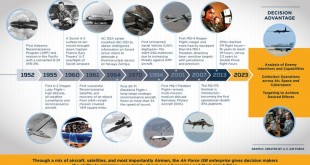An outbreak of violence in the ongoing Israeli–Palestinian conflict commenced on 10 May 2021, though disturbances took place earlier, and continued until a ceasefire came into effect on 21 May. It was marked by protests and rioting, police riot control, rocket attacks on Israel by Hamas and Palestinian Islamic Jihad, …
Read More »US Aerospace industrial base Challenges and Way ahead
The U.S. Aerospace & Defense (A&D) industry is the world leader in the design, development and manufacture of technologically advanced aircraft, space systems and defense capabilities. Since the Wright Brothers’ first powered flight in 1903, the aerospace industry has grown by leaps and bounds and produced iconic achievements such as …
Read More »DARPA SQUIRREL exploiting robots relays for military communication in caves or jungles with heavy foliage
Mobile robots used by the military and law enforcement agencies require a robust communications link for successful mission executions. Such mobile robots are increasingly used in life-threatening situations and hazardous environments, rendering a solid communications link to be of vital importance. Tactical mobile robots used in military and law enforcement operations …
Read More »Mobile User Objective System(MUOS) fully operational for U.S. DOD’s military satellite communications in Mountains, Jungles, Urban areas and Arctic
Satellite communication is a technology that is used to transfer the signals from the transmitter to a receiver with the help of satellites. Communications via satellite have the unique characteristic of the ability to cover the globe with a flexibility that cannot be duplicated with terrestrial links. Mobile satellite service …
Read More »Autonomous and Unmanned Ground Vehicle (UGV) for Security
National security has been described as the ability of a state to cater to the protection and defence of its citizenry. It includes Human security which means freedom from pervasive threats to people’s rights, safety, and lives. Homeland security means protecting the nation against terrorism, natural or man-made disasters, as …
Read More »DARPA ADAPTER developing bioelectric implant or ‘travel adapter’, which will OnDemand restore normal sleep and soldiers’ performance
Businessmen are traveling longer distances to meet potential clients, launch new projects, and negotiate deals, but traveling comes with poor sleep and jet lag. Science tells us jet lag causes everything from headaches to irritability, poor decision making, and loss of concentration. Warfighters are travelers and thus suffer from travelers’ …
Read More »Countries developing Strategies and Tactics for warfighting for Information Warfare
A rapidly increasing percentage of the world’s population is connected to the global information environment. The new information age has seen rise of social media, bloggers, smartphones, plethora of cable and satellite news channels. It can also be seen in the ongoing Internet of things revolution, the internetworking of physical …
Read More »DARPA SocialSim developing effective Information warfare analysis tools for social media
A rapidly increasing percentage of the world’s population is connected to the global information environment. At the same time, the information environment is enabling social interactions that are radically changing how and at what rate information spreads. Both nation-states and nonstate actors have increasingly drawn upon this global information environment …
Read More »USAF’s ISR dominance strategy for A2/AD environments based on disruptive technologies and the use of multi-role, cross-domain ISR collection capabilities
The U.S. military could suffer unacceptably high casualties and struggle to win, or perhaps lose, a war against China or Russia. This implication by the National Defense Strategy Commission stands in contrast to the past several decades during which the U.S. possessed military power without equal. A key capability to …
Read More »Air purifiers from HEPA to Photocatalytic oxidation (PCO) have become essential in homes and for military
To stay healthy, we need to pay not only close attention to what is in the food we eat and the water we drink but also the quality of the air we breathe. The air we breathe both indoors and out can directly impact our health, quality of life, and …
Read More » International Defense Security & Technology Your trusted Source for News, Research and Analysis
International Defense Security & Technology Your trusted Source for News, Research and Analysis









